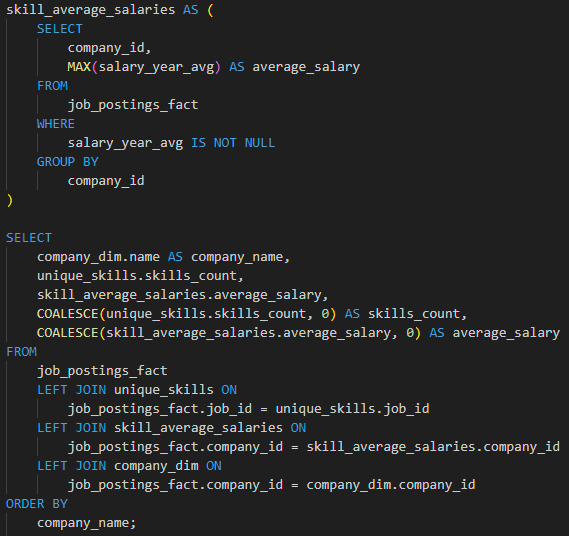Exploring SQL: Building a Foundation in Data
Structured Query Language (SQL) is a key tool for any data-driven project. In this post, I’ll summarize what I learned in the SQL course, from the basics to advanced query techniques, and how I plan to apply these skills in upcoming projects.
SQL is the backbone of working with relational databases. Whether you’re querying customer data or analyzing multi-table datasets, SQL helps you retrieve and manipulate data efficiently. For someone transitioning into data science, mastering SQL felt like a natural step after working with Python and large datasets in engineering projects.
I followed the SQL Course by Luke Barousse, which provided a structured approach to learning SQL from scratch. The course is divided into two major parts:
Basics: Covers core SQL syntax and essential queries.
Advanced: Focuses on complex operations, table manipulation, and query optimization.
Course Breakdown
Basics: Building Core Skills
The first part of the course introduces the fundamentals of SQL, focusing on understanding and writing simple queries. Key topics included:
Basic Queries: SELECT, WHERE, ORDER BY – essential commands to filter and sort data.
Comparisons and Wildcards: Techniques to find patterns and work with incomplete data.
Aggregations: Calculating sums, averages, and other statistics from large datasets.
NULL Values and Joins: How to handle missing data and combine tables effectively.
Each section ended with Practice Problems, which helped solidify the concepts with hands-on exercises
Advanced Concepts: Beyond the Basics
Once the basics were clear, the course shifted towards more advanced topics that are crucial for handling complex datasets:
Subqueries and CTEs (Common Table Expressions): These were game-changers for creating readable and modular queries.
CASE Expressions: Adding conditional logic to queries made the data analysis more flexible.
Union Operators: Combining multiple query results into a single dataset.
Data Functions: Powerful tools for working with dates and string manipulation.
By the end, I felt equipped to write efficient queries that could handle both small and large datasets.
Reflections and Next Steps
This course wasn’t just about writing queries—it was about thinking like a data professional. Some key takeaways:
Write Efficient Queries: Even simple queries can become a bottleneck when dealing with large datasets. The course emphasized writing optimized and clear queries.
Modular Queries with CTEs: Using CTEs simplified the structure of complex operations, making queries easier to read and maintain.
Practical Applications: Each practice problem reflected real-world scenarios, from data aggregation to filtering and reporting.
Future Plans: Diving Deeper with SQL Projects at Work
With these foundational skills, I’m ready to take on more advanced SQL challenges. My next step is a full-scale SQL project that builds on everything I learned in the course, applying it to real-world datasets. This project will go beyond exercises and focus on end-to-end SQL workflows—from data extraction to creating complex reports.
Additionally, I plan to apply these skills at work, where SQL will help streamline and optimize some of my current tasks, especially in managing data for engineering and simulation projects. Using SQL alongside Python will allow me to handle larger datasets more efficiently and extract deeper insights.



